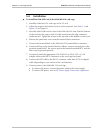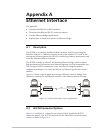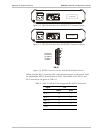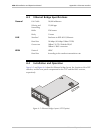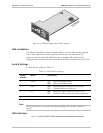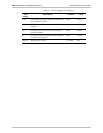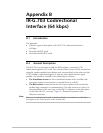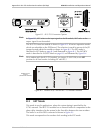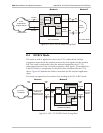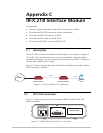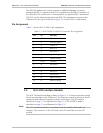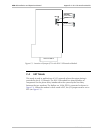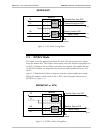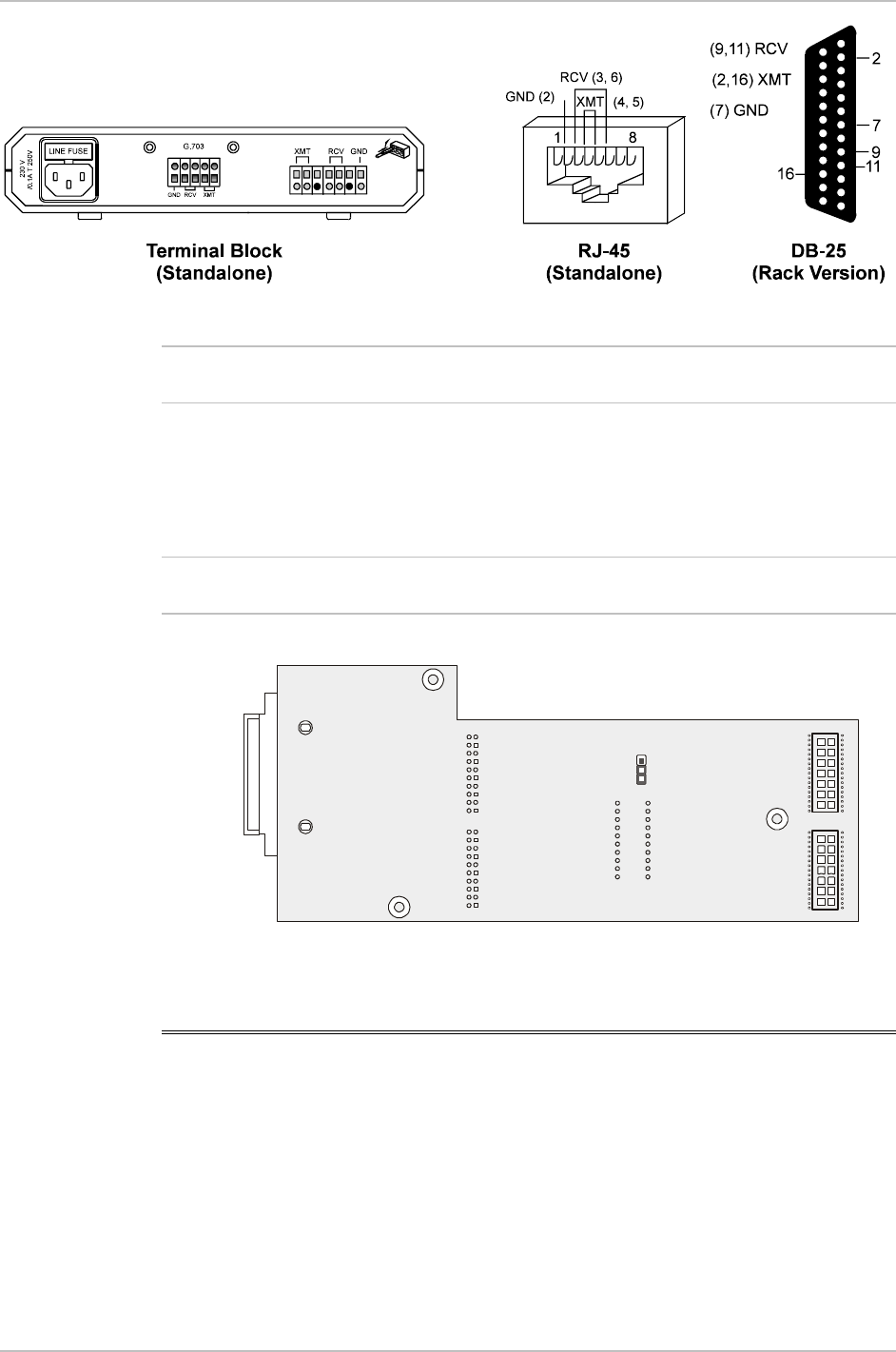
Appendix B IR-G.703 Codirectional Interface (64 kbps) ASM-20 Installation and Operation Manual
B-2 EXT Mode
Figure B-1. IR-G.703 Connector Options
In Figure B-1, RCV refers to the input signals to the IR module; XMT refers to the
output signals from the module.
The IR-G.703 interface module is shown in Figure B-2. It has two operation modes
which are selectable on the PCB board. The selection is made by means of the JP1
jumper located within the module as shown in Figure B-2. The EXT mode is
described in EXT Mode on page B-2 and illustrated by Figure B-3. The INT/RCV
mode is described in INT/RCV Mode on page B-3 and illustrated by Figure B-4.
On a modem with the IR-G.703 module, set jumper J1 (XMT CLK) to the EXT
position for all clock modes (including INT and RCV.)
INT/RCV
JP1
EXT
TERMINAL BLOCK
OR RJ-45
(STANDALONE VERSION)
Figure B-2. Location of JP1 on the IR-G.703 Interface Module
B.3 EXT Mode
This mode is used in applications, where the system timing is provided by the
G.703 network. The IR-G.703 module has an internal buffer to compensate for the
phase delay introduced to the system by the line delay between the two modems.
The buffer is an 8-bit FIFO connected as shown in Figure B-3.
This mode corresponds to the modem clock working in the EXT mode.
Note
Note



